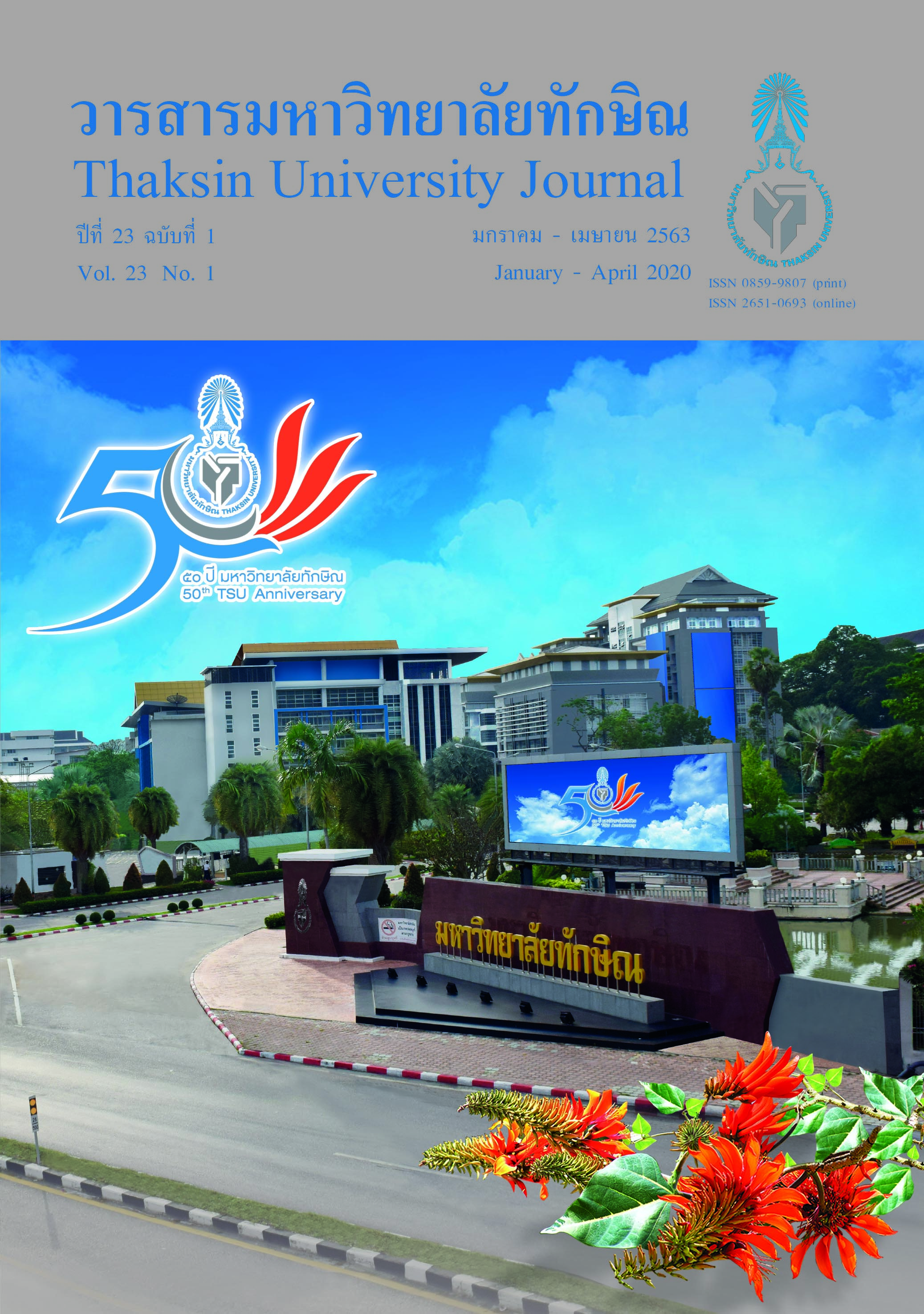Assessment of Wind Energy using Global Wind Atlas Methodology: A Case Study of Central Region of Thailand A Case Study of Central Region of Thailand
Main Article Content
Abstract
This research presents wind energy assessment in the central region of Thailand in order to response the national policy Power Development Plan (PDP2018) that helps to increase the proportion of electricity generation from wind energy. Wind speeds are represented in the wind atlas by using the global wind atlas methodology that developed by DTU Wind Energy and Vortex under the support by World Bank Group. Wind atlas at the level of above 100 m was validated using measured wind speed data obtained by 6 masts in the central region of Thailand. The Global Wind Atlas (GWA) methodology applied the wind climate of ERA5 in the period of 10 years (2008 – 2017) provided by European Center for Medium-Range Weather Forecasts (ECMWF)at resolution of 30 km forced with mesoscale WRF atmospheric modeling under 3 km resolution. Results from mesoscale were input for microscale wind flow WAsP modeling along with digital 30 m high-resolution topography. Results showed that the mean error of wind at 100 m obtained from GWA methodology was 16.31%. Based on wind atlas by GWA methodology, it was found that were potential areas with mean wind speed more than 6.0 m/s in the western, northeastern and southern of the study area. Wind atlas by GWA methodology could be used for met mast installation for further micro-siting in a wind power plant development.
Article Details

This work is licensed under a Creative Commons Attribution-NonCommercial-NoDerivatives 4.0 International License.
References
Department of Alternative Energy Development and Efficiency, Ministry of Energy.(2019). Calendar Year of Renewable Energy: July 2019 (Online). Retrieved 13 November 2019, from https://www.dede.go.th.
Energy Regulatory Commission. (2019). The database system of SPP/VSPP (Online). Retrieved 13 November 2019, from https://www.erc.or.th/ERCSPP.
Department of Alternative Energy Development and Efficiency, Ministry of Energy. (2018). Thailand Power Development Plan 2018-2037 (PDP2018)(Online). Retrieved 13 September 2019, from https://www.eppo.go.th/power/PDP2018/PDP2018.pdf.
Department of Alternative Energy Development and Efficiency, Ministry of Energy.(2015). Thailand Power Development Plan 2015-2036 (PDP2015)(Online). Retrieved 15 December 2015, from https://www.eppo.go.th/power/PDP2015/PDP2015.pdf.
Manomaiphiboon, K., Prabamroong, A., Chanaprasert, W., Rajpreeja, N., & Tung, P.T.(2010). Wind resource assessment using advanced atmospheric modeling and GIS analysis: final report. Bangkok: Thailand Research Fund.
Janjai, S., Masiri, I., Promsen, W., Pattarapanitchai, S., Pankaew, P., Laksanaboonsong, J., Bischoff-Gauss, I., & Kalthoff, N. (2014). Evaluation of wind energy potential over Thailand by using an atmospheric mesoscale model and a GIS approach. Journal of Wind Engineering and Industrial Aerodynamics, 129, 1–10.
Waewsak, J., Landry, M., & Gagnon, Y. (2013). High resolution wind atlas for Nakhon Si Thammarat and Songkhla provinces, Thailand. Renewable Energy, 53, 101–110.
Chiwamongkhonkarn, S., Waewsak, J., & Chaichana, T. (2014). Wind Resource Potential at Pak Panang and Chian Yai Districts of Nakhon Si Thammarat Province. Thaksin University Journal, 17(1), 13–20.
Waewsak, J., Landry, M., & Gagnon, Y. (2015). Offshore wind power potential of the Gulf of Thailand. Renewable Energy, 81, 609–626.
Chancham, C., Waewsak, J., & Gagnon, Y. (2017). Offshore wind resource assessment and wind power plant optimization in the Gulf of Thailand. Energy, 139, 706–731.


